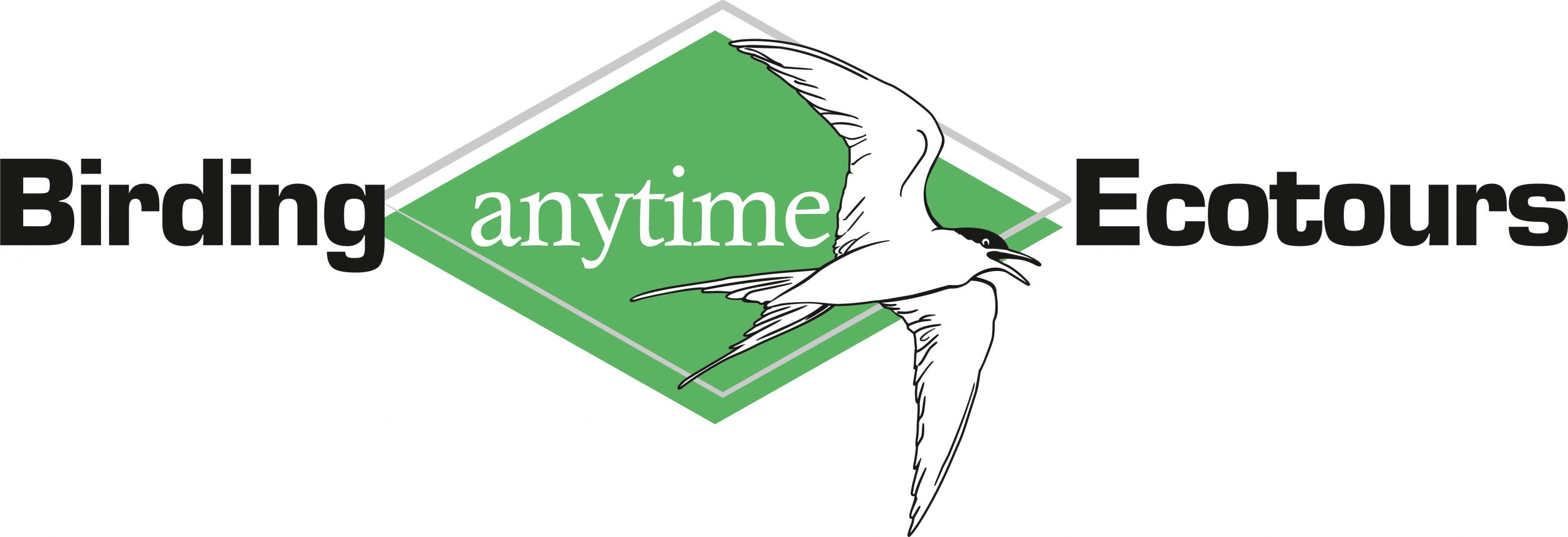Lesvos: Europe’s Premier Bird Migration Island!
Since the early 1990s, Lesvos has established itself as one of the premier birding destinations within the Mediterranean basin. It combines the excitement of migration with several key species which can be otherwise difficult to see elsewhere in Europe. It might not have the large numbers of raptors some other places enjoy, but even raptor passage can be exhilarating.
The Island – The Greek Aegean island of Lesvos lies within a few kilometers of the Turkish mainland, which wraps itself around the east and north of the island. At 1630 square km, Lesvos is the third largest Greek island (after Crete and Evia) with a population of around 87,000. Thankfully, the mass tourism, which has blighted much of the Mediterranean basin has so far bypassed Lesvos.
Lesvos is a rural island with scattered towns and villages. The island is famed for the finest olive oil in the world, produced from over 11 million olive trees; great Greek food based on fresh fish and seafood caught daily in the warm, shallow offshore waters; the female poet Sappho (c.630-570 BC); it’s fabulous Petrified Forest, one of the finest in the world; hot springs; and, yes, Lesbians. Yes, it is true, Lesvos is a favourite resort for gay women during the hotter summer months (mainly around Skala Eresou in the west). Lesvos is now however also known as one of the premier birdwatching locations in the Mediterranean.
In spring, the main birding season, Lesvos is a beautiful, lush green island with an amazing variety of scenery — green fields; olive grove covered hillsides; barren, volcanic mountainous areas; rich pine and sweet chestnut woods; beautiful beaches; and is dotted with traditional villages clinging to hillsides. From mid-May onwards, as temperatures begin to exceed 30oC, the island begins to dry and only the underground water resources maintain the plant life at the surface. The whole island abounds with birds, flowers and other wildlife to rival anywhere in Europe. The people are warm and welcoming and amongst the friendliest in Greece.
The Birding Year – Spring, particularly May, remains the favoured time for birders to visit the island. Increasing numbers, however, do visit at other times, including autumn and others take family holidays during the summer months.
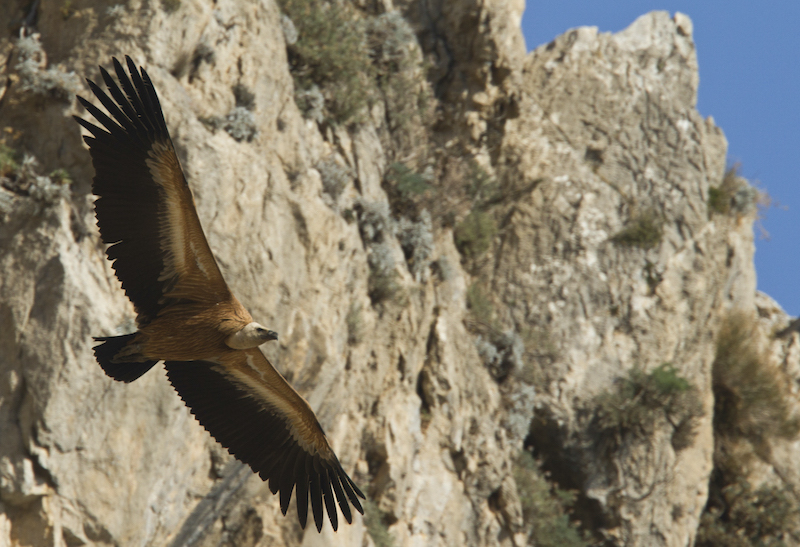
Late Winter – January and February are coldest months but generally bright with regular rainfall. Occasional frosts. Temperatures begin to increase from mid-February.
With wetland areas holding water, wildfowl numbers are at their highest, but no species ever occurs in very large numbers. These sites also hold increased Coot and Water Rail. The two saltpan areas hold over-wintering Greater Flamingos, herons, egrets and waders. Kingfisher is widespread both at inland freshwater sites and around the coast. The shallow basin of the Gulf of Kalloni holds significant numbers of wintering wildfowl and seabirds including Great Crested and Black-necked Grebes, Black-throated Diver, Great Cormorant and Shag. White Wagtail and Water Pipits are also widespread with smaller numbers of Grey Wagtail. Lowland areas hold mixed flocks of seedeaters, mainly Corn Bunting, Skylark and commoner finches, but also Serin and Woodlark. Raptors include Marsh Harrier and Goshawk. Wintering warblers can be much in evidence with Blackcap, Chiffchaff and Cetti’s and Sardinian Warblers. The latter are much more widespread throughout lowland areas than at any other time of year. The island can hold large numbers of Blackbird and Song Thrush, and Robin and Black Redstart are widespread and numerous. Hawfinch, Siskin and Crossbill are all usually present, and can sometimes be found in large flocks in some winters. Numbers of many species vary from year to year depending on the severity of the winter, especially on the neighbouring Turkish mainland, where a hard winter can also lead to increased numbers of thrushes (including Fieldfare and Redwing), Lapwing and wildfowl (including geese).
Spring – March and April are unpredictable months weather-wise. As days begin to brighten the temperatures also pick up but it can be showery and windy. By the end of April and into May, air temperature becomes noticeably warmer and rainfall becomes less likely. May daytime temperatures can be tempered by northerly winds making it feel decidedly cool on some days.
Migration is already underway in early March with early migrant species such as Chiffchaff, Garganey and Northern Wheatear in evidence. By mid-month, hirundines and swifts are moving through and by the end of the month the wetland areas in particular see an increase in both species and numbers – herons, egrets, storks, waders, raptors and the first crakes. The first Quail can be heard calling from lowland fields. Even highland areas will see increased activity as breeding birds begin setting up territories in earnest and the first Black-eared Wheatears arrive. Stone-curlews appear around the saltpans and river mouth areas, with some staying on to breed.
Early April sees another push of migrants. Raptors include Lesser Kestrel and Short-toed Eagle from the start, both increasing in numbers during the month. Red-rumped Swallows and Crag Martins arrive back around breeding sites and even larger numbers pass through.
Mid-month is the best time for Pallid Harrier and the passage and arrival of many species seems relentless; it is the period with both greatest variety of species and total number of birds. Cretzschmar’s Buntings are suddenly all over the mid-to-higher areas, Orphean and Rüppell’s Warblers are on territory, and ‘yellow’ wagtails begin to pass through in considerable numbers. Flycatchers also pass through in large numbers, including many Collared and the odd Semi-collared. Warblers include increasing numbers of Wood, Icterine and Eastern Bonelli’s (on passage as well as returning breeding birds), good numbers of Golden Oriole, Hoopoe, Common Redstart, Whinchat (often in hundreds), and small numbers of Roller.
Lucky birders will chance upon Ortolan Bunting or a singing Thrush Nightingale. You won’t fail to miss Great Reed Warblers around any of the scrub- or reed-lined rivers and wetlands. Raptors include good numbers of Marsh and Montagu’s Harriers, the last of the spring’s Hen Harriers, increasing numbers of Osprey, Hobby, Red-footed Falcon and Lesser Kestrel, and by the month’s end, Eleanora’s Falcon and Levant Sparrowhawk – the latter occasionally seen in small flocks, sometimes into double figures. Long-legged and Common Buzzards will be displaying over the open valleys, Goshawks are still much in evidence and the odd Black Kite and eagle species can be seen passing over to the north. In the west, Isabelline Wheatears are back on their breeding areas and offshore both Yelkouan (Mediterranean) and Scopoli’s (Cory’s) Shearwaters can be seen. Waders peak at wetland sites including the saltpan areas and wetter rivers and include good numbers of Wood, Common, Marsh and Curlew Sandpipers, Little and Temminck’s Stints, Greenshank, Spotted Redshank and the occasional goody such as Spur-winged Plover or a downright rarity such as a Caspian Plover. Rivers, especially river mouths, are the best place to look out for Citrine Wagtail, and the coastal areas are the places to look for Audouin’s Gull. Any wetland area can see passage flocks of Mediterranean Gulls, the odd Slender-billed Gull, Gull-billed Terns or Collared Pratincoles. The latter can often be seen in good numbers in fields around the Kalloni Saltpans. Mid-month usually sees the last of the lingering wintering species such as Great Crested and Black-necked Grebes, wildfowl and a decline in Greater Flamingo numbers.
Mid- to late April is probably the best time to catch up with two of the main target breeding species. Cinereous Buntings are now back on territory in the west of the island, with Ipsilou the best site to look for them but they can also be encountered in many western areas including the Meladia Valley between Sigri and Eressos and at Aghia Ioannis just west of Parakila. Look for males singing from prominent rocks or small trees. They can be incredibly difficult to see!
Krüpers Nuthatch is also very obvious. Most pairs excavate their nest holes around the middle of the month. Once the nests are complete the females will be sat on eggs and males then make only irregular nest visits and turn all too quiet. From the last week of the month the first broods will have hatched and both parents will be busy collecting food and regularly seen at the nest.
The back third of April sees the main arrival of Olivaceous Warbler, who soon set up territories along the river valleys and wetlands. Shrike numbers peak, with Woodchat, Red-backed, Lesser Grey and Masked Shrikes all in evidence, and occasionally all seen together around a single field! Hoopoes will also be much more evident and as the month progresses the wooded valleys will be filled with their far-carrying song and courting birds which often chase one another around suitable nesting areas. Check coastal areas for Red-throated Pipit and Short-toed Lark, while Barred and River Warblers, Wryneck, Red-breasted Flycatcher and other scarce passage passerines can pop up anywhere. The first flocks of Bee-eaters can be heard passing over, with some tempted down into the wooded valleys or fruit groves to feed.
As water levels begin to reduce at places such as Metochi Lake, searching for Little and Spotted Crakes is made a whole lot easier! Little Bitterns too are more obvious now and Purple Herons are moving through and will often roost in tall trees or long grass areas at wetland sites or along river valleys, and Night-herons are also best looked for at their day time roost sites, including the tamarisks around Metochi Lake. Both of these herons can occur in large flocks. These same areas often hold roosting hirundines, often in huge numbers. Common and Alpine Swifts pass over in much broader movements, but river valleys often funnel them northwards when clouds can appear overhead. During cooler, damper weather birds are driven down and will concentrate over water areas or along valley ridges to feed. The odd Pallid Swift might still be in amongst these flocks, but this species is best looked for earlier in the month.
White, and occasionally Dalmatian, Pelicans can also be encountered this month, with both species occasional occurring in small flocks with the odd singleton lingering for a few days.
By the end of the April Masked Shrikes will be nesting, Rock Nuthatches will be feeding young in their funnel-shaped mud nesting chambers and Common Nightingales sing from any damp scrubby areas, including the hotel grounds at Skala Kallonis. The first broods of Sombre Tits will be hatching and the parents much more obvious as nest visits increase. The first Black-headed Bunting, Olive-tree Warbler and Rufous Bush Robin all arrive in the last few days of the month, and breeding Bee-eaters can be seen excavating their nest holes in the low riverbanks.
Spring raptor migration occurs broadly across the island, but several ‘hot spots’ stand out. In the west, mixed falcon flocks can be found hunting over hillsides between Ipsilou and Sigri. Ipsilou mount itself is excellent for many species, and watching from the top can often give views down on to birds moving along the valleys either side. In the centre of the island, the route north following almost exactly the road north to Petra is excellent. The Raptor Watchpoint just north of Kalloni at the ‘band stand’ (see site section) is excellent. Just to the east, Napi Valley is also excellent with several good viewpoints along its length. The north coast track between Efthalou and Skala Sikaminias provides several areas to view birds leaving to the north, and the main road inland of here running between Molivos and Mandamados (running below Mount Lepetimnos) offers vantage points looking south and north. In the south of the island, the Almiropotomas valley between Vatera and Aghias Fokas can also be very good. The headland of Aghias Fokas is a natural arrival point for birds coming across the sea to the south (on a clear day the Turkish mainland and Chios can be seen to the south of here), and the valley to the north provides a natural corridor for migrants to follow northwards towards Polchnitos and over the Gulf of Kalloni (and then either north along the Napi Valley or the Kalloni-Petra route). The sheer size of Mount Olympus cannot be ignored as such a prominent area will attract migrating birds, particularly larger birds such as raptors, storks and pelicans in need of updrafts and thermals to lift them high over the island. Few birders however spend much time down this southern end of the island, and virtually no one visits the far southeastern peninsula and the Haramida Marsh area where Sardinian Warbler is present throughout the year.
With migration still in full swing, and temperatures now decidedly on the warm side, the first week of May sees more birders on Lesvos than any other week.
Early May sees an increased chance of semi-rarities such as Thrush Nightingale or even a White-throated Robin. The latter, although still a vagrant, amazingly has a tentative hold as a breeding species with the odd pair popping up every few years, but rarely in the same location.
Marsh terns are much in evidence with good numbers of White-winged Black and Whiskered Terns gracing the saltpan areas, the wetter rivers and any remaining flooded fields (e.g. near the Kalloni saltworks entrance). These same wetland sites continue to attract waders including the occasional Great Snipe.
Red-footed Falcons peak in early May, but like most species, numbers are heavily dictated by the weather. Search through any flocks of falcons for Eleanora’s, and make sure to check all small raptors for Levant Sparrowhawk. Honey-buzzard too should be much more evident.
Rufous Bush Robins arrive with a vengeance during the first week of the May and territorial males are easy to pick out as they sing their thrush-like tune from a prominent bush-top. A territory can comprise a ridiculously small area of only a small group of bushes, and despite the limited cover, birds can go missing for long periods when disturbed.
As water levels recede in the heat, look for small pockets of water containing large numbers of tadpoles. Any such pools near cover will attract herons and egrets, including Little Bittern and Night Heron. Muddy margins along rivers and wetland areas are still good for secretive crakes and early May offers the best chance to find a Baillon’s.
By mid-month some of the breeding birds are easier to see. Krüpers Nuthatch young will be fledging and small family parties should be looked for in the usual woodland areas. Middle Spotted Woodpeckers are remarkably common and will be feeding young in the nest throughout the month. During nestling-feeding the parents are much more obvious and noisier than earlier in the season and nest holes are often easy to stake out from a respectable distance.
From mid-month numbers of many species begin to reduce leaving one of the spring spectacles to take over – the passage of Rose-coloured Starling. Large flocks occur across the island, but particularly around water areas where they come down to drink in noisy groups before hiding in nearby trees. They have a distinct preference for Mulberry trees, which concentrates the flocks to regular sites. This passage usually continues into June.
Other breeding birds to look for at the month’s end include Common Nightjar, which occurs across the island in open scrubby areas including Potamia Valley, Mesa area and throughout the west. Listen for their remarkable ‘churring’ song at dusk and watch for their delightful display flights, including ‘wing-clapping’ against the dusk sky.
As summer takes hold the island becomes home for many fascinating insects including the spectacular Threadwing Lacewing and numerous butterflies including Swallowtail.
Summer – June to August is hot and dry. With virtually no rainfall most areas turn decidedly brown with green areas restricted to a few spots where natural underground watercourses flow close to the surface and irrigated farmland. Unless its been a very wet spring, all the rivers will now be dry and standing water restricted to the irrigation reservoirs, such as at Petra Potamia, and the reservoir at Pithariou (near Eressos).
Migration tails off with the sudden surge in temperature. Their remains a chance of lingering migrants during early June, but this hot summer period is largely left to breeding species. June can be a good month to see family parties of many species including Sombre Tit, Rock Nuthatch, shrikes, buntings and larks. Graniverous species begin to flock and finches, buntings and larks are soon flying around together in search of seedy areas. In upland areas wheatears are also easier to see now the young have fledged.
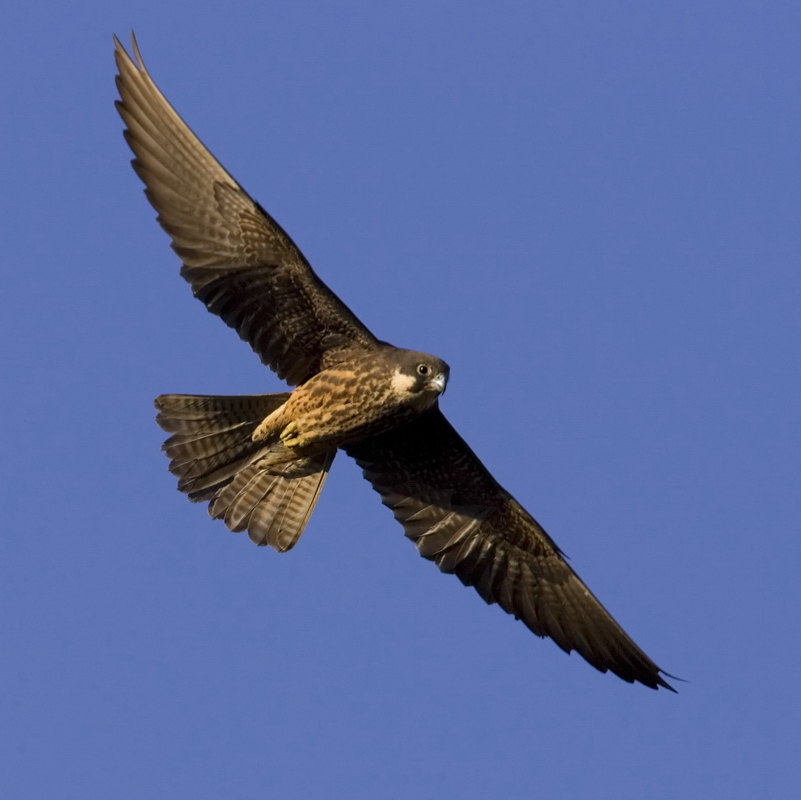
The late arriving Eleanora’s Falcon are breeding by the end of June and small feeding parties can be seen hawking insects over hillsides and ridges, and chasing hirundines up and down the valleys. The west is by far the best area to look out for these magnificent falcons. They breed on the offshore islands around Lesvos and can be seen scything through flocks of Alpine Swifts. These large swifts are present throughout the summer. Some may be breeding on offshore islands or around the larger mountains, but most are probably feeding parties from the Turkish mainland. Swifts are well-known for their long-range foraging flights which can take them over 100km from their breeding sites.
Into July and the first returning waders begin to appear. Non-breeding birds are often the first to appear (some having never gone much further than Lesvos), and by the end of the month, the first young birds will be moving through. With standing water pretty scarce concentrate your efforts on the saltpan areas, with the Skala Polihnitou saltpans now coming in to their own. The Pithariou Reservoir is also worth covering as it holds water throughout the summer.
From mid-July and throughout August the breeding summer migrants begin to leave the island, many of them forming small flocks before departure. Black-headed, Cretzschmar’s and Cinereous Buntings can form large flocks and are particularly obvious, along with large flocks of Corn Buntings.
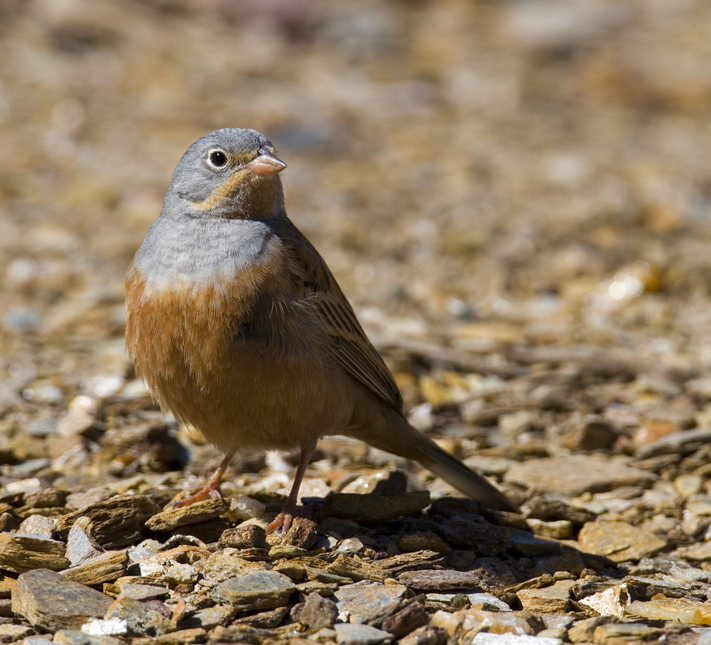
As August progresses, raptors become more evident. Honey-buzzards and Goshawk begin to move southwards, and both species can be seen in good numbers from the middle of the month. Egrets, herons and storks are also on the move south, and the saltpan areas are a magnet for any wetland species.
During July and August birding is best confined to the cooler early morning and late evening when passerines are much more evident and raptors are often on the look out for the weak or unwary. Small birds will often be attracted to the smallest of water areas, including dripping or leaking irrigation pipes in the olive groves and arable fields.
The summer is the best time to see many of the amazing lizard species on the island. Many buildings host the diminutive Turkish Ghecko, whilst Wall Lizard occurs in most gardens and woodland areas and the stunning and large Balkan Green Lizard occurs across the island and is unmissable.
Autumn – September sees only a marginal drop in temperature but northerly winds can still make it feel cool. October remains moderately warm, cooling towards the months end with the chance of some rain. Standing water remains at a premium throughout.
September is an increasingly popular month for the visiting birder and offers great, relaxed warm weather birding. Raptors and storks are much in evidence. Goshawk and Honey-buzzard numbers peak and double figure day counts can be expected, and the chance of picking up species such as Golden, Bonelli’s and Booted Eagles are greatly increased. Some of the best raptor watching can be either along the north coast (e.g. Molivos castle or near Sikaminia) with birds coming across the sea from Turkey, or in the south of the island (Polichnitos/Vatera area) as birds depart southwards.
White Pelicans begin to pass through and large flocks have been recorded. Birds arriving at the island late in the day might even roost on one of the saltpan areas or offshore in one of the shallow bays, moving on mid-morning the following day when the air temperature is warm enough to provide the thermals needed to help them on their southward journey.
The two saltpan areas and Pithariou Reservoir should be visited regularly. Not only do these areas attract and hold the wetland birds, but also the surrounding areas are the best areas to look for migrant passerines which are similarly drawn in to these three major wetland sites.
Don’t be afraid to wander though. Even the more barren west and the pine forests appear devoid of birds at first look, but good searching will provide rewards. The forest areas in particular, offering shade from the hot sun, hold shrikes, wheatears and warblers throughout the month.
Hirundines are on the move throughout, as are Bee-eaters, many of which go straight over head, but others are attracted in to woodland glades and sheltered valleys late in the day where they roost overnight. Common species such as Whinchat, Turtle Dove, Willow Warbler and Spotted Flycatcher pass through in large numbers and Kingfishers arrive at wetland sites and around the shallower coastal areas. The wetland areas and dry river valleys are often the best places to search. Even though dry, the river valleys are lined with trees and scrub which provide shelter and feeding sites along their length and a linear route for birds to follow southwards across the island. Rarer autumn passerines can be found including Collared Flycatcher, Eastern Bonelli’s Warbler and real rarities such as Bluethroat.
Into October and winter visitors begin to arrive with increasing numbers of Chiffchaff, Song Thrush, White Wagtail and other passerines. The wetland areas hold increasing numbers of Greater Flamingo, egrets, herons, waders and wildfowl whilst Great Crested and Black-necked Grebe numbers build up offshore.
Early winter – Come November and lower temperatures bring increased rainfall (especially from mid-November) and the rivers begin flowing again, Metochi Lake and Pithariou Reservoir fill up and the irrigation reservoirs begin to fill. December sees a further temperature drop and even a chance of snow.
Pygmy Cormorant is one of the more unusual winter visitors with odd birds seen around coastal areas. Numbers of Great Cormorant increase too. Red-breasted Merganser join increasing numbers of wintering wildfowl, including scarcer species such as Pochard. Marsh and Hen Harriers hunt the open areas, particular around the coast. Numbers of Black Redstart, Blackbird and Song Thrush continue to increase, and will increase further if mainland Turkey sees a cold snap.
Not just birds! – Lesvos is renowned for its birds, but in spring, when lush and green, the island is a veritable feast of wildlife. Over 50 species of butterfly occur between March through to October, with over species of dragonfly and 80 species of orchid (including the endemic Lesbos Orchid) also to be found. Wetland areas hold two species of terrapin and countless frogs and toads (including Common Tree Frog) and Spur-thighed Tortoise occurs across the island. Lizards (often seen) and snakes (rarely seen) also occur across the island.
Adapted from A Birdwatching Guide to Lesvos by Steve Dudley
Agiasos
Everyone arriving by air lands on the eastern peninsular of the island. Many don’t see this side of the island again until they return for their homeward flight! The Agiasos area lies below Mt Olympus and its sweet chestnut woods are full of commoner songbirds plus Middle Spotted Woodpecker and Eastern Bonelli’s Warbler. The woods are also home to many rare flowers including orchids. The Dipi Larisos reedbed is at its best in winter when Pygmy Cormorant can occasionally be seen and there are large roosts of Corn Bunting and Common Starling. You have to drive past the site to and from the airport and is always popping in if time allows.
Eastern Gulf of Kalloni
The huge Gulf divides the island in two, and down its eastern side are several excellent sites. Achladeri Forest is part of the large pinewood area covering much of the centre and south east of the island. It is home to another of the island’s major draws, Krüper’s Nuthatch which usually shares areas with breeding Masked Shrike, Long-eared Owl and Short-toed Treecreeper.
The Polichnitou Saltpans are much smaller than the Kalloni pans and because of a different flooding time, are better in autumn than in spring (Kalloni pans is the reverse). However, even in spring they hold many wetland species and the surrounding farmland is great for open country species such as harriers, falcons, larks, pipits and buntings.
Kalloni area
The town of Kalloni lies right in the middle of the island. Many birders shoose to stay at the nearby coastal resort of Skala Kallonis and many of the sites in the area can be covered on foot or bike if you wanted to be car-free during your stay.
Either side of Skala Kallonis are two important rivers, the Christou (to the west) and Tsiknias (to the east). The Christou is mainly a slat and brackish water marsh and creek which attracts the expected storks, herons, egrets, waders and coastal grassland species. The Tsiknias however is one of the larger rivers on the island and a major migration corridor. Its mouth attracts waders, gulls and terns, whilst egrets, herons and storks occur along its length. The shallow river is excellent for waders including Temminck’s Stint and terns including Whiskered and White-winged Black. The densely vegetated banks bustle with Common Nightingale, warblers and sparrows (inc. Spanish). Bee-eaters breed in the sandy river banks and swifts (all species) and hirundines (all species) regularly feed over the river and fields. Harriers, Long-legged Buzzard and other raptors can be seen in the surrounding fields which are also attracts many migrant including shrikes (all species), Roller, Hoopoe, wagtails, chats, warblers and buntings. The large river valley points north deep in to the island and is used by many species to cross the island north to Turkey, including storks, egrets, herons and raptors. This area also hosts one of the spectacles of late spring when Rose-coloured Starlings arrive and feed in the Mulberry trees dotted around the area.
The nearby Kalloni Saltpans cover a huge area and in spring rates as the top site on the island. The pans themselves attracts large numbers of waterfowl, egrets, herons, storks, Greater Flamingo, waders, gulls and terns and other wetland species. After a wet winter the surrounding fields are dotted with seasonal pools which are often concentrate birds and attract other wetland and grassland species including flocks of Glossy Ibis, Ruddy Shelduck, Collared Pratincole, Bee-eater and Red-footed Falcon. You could spend a whole day here and still not cover it! This area probably accounts for more rare bird finds than any other site on the island.
Inland there is Metochi Lake which is actually a widening of the Christou River. This is the premier site for both Little Bittern and Little Crake, both often found in double-figure numbers. Spotted Crake occurs annually and Baillon’s are found most years. It is also excellent for wetland warblers including Great Reed, herons, swifts, hirundines and raptors.
Other nearby sites include Potamia Valley (raptors and breeding Olive-tree Warbler), the Kalloni Mini Soccer Pitch (Scops Owl), Madaros (Chukar, Rufous Bush Robin) and the Kalloni Raptor Watch Point (raptors!).
Napi Valley
This is a large, broad valley, which lies east of Kalloni and runs north from the top of the Gulf of Kalloni north to the north coast near Mandamados. It is a major migration corridor, particularly raptors and storks, as well as an excellent area for many resident and migrant breeders including Middle-spotted Woodpecker, Western Rock Nuthatch, Hoopoe, Masked Shrike and Sombre Tit. It is also one of the principle sites for Olive-tree Warbler with the Platania area in particular very good for this species.
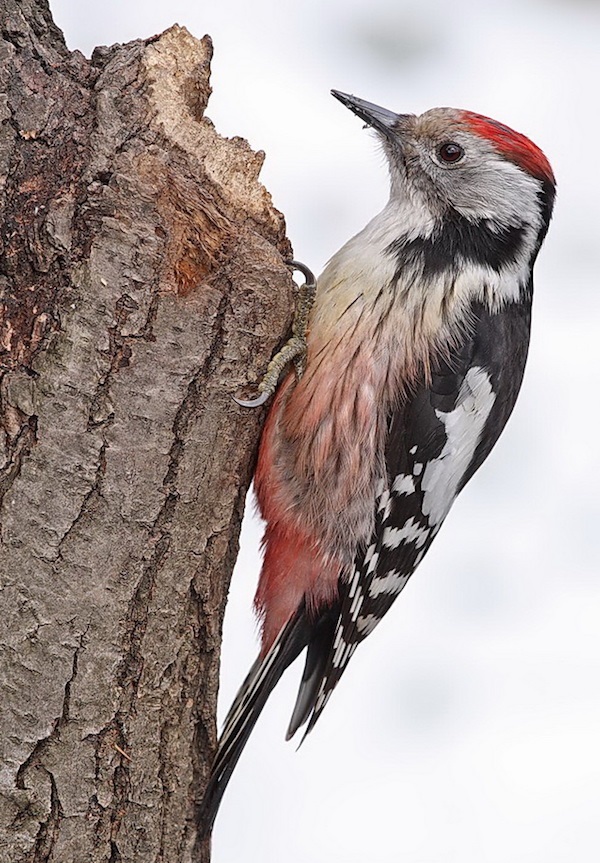
North Coast
The northern area between Petra (in the west) and Mandamados (in the east) is a great area for many breeding species and migrants. Rüppell’s Warbler occurs at Kavaki near Petra, which is also a good migrant passerine and raptor area. The north coast track between Efthalou and Skala Sikaminias is excellent for Yelkouan and Scolpoli’s Shearwater and for raptors (spring and autumn) crossing the narrow straight between the island and Turkey and migrant passerines can be found in the narrow valleys. The in land roads running east to west to the north and south of Mt Lepetimnos are neglected areas but can be excellent for viewing migrant raptors in spring and autumn.
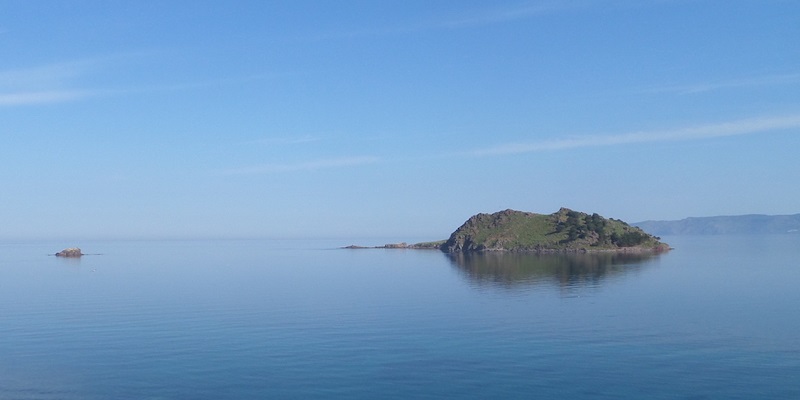
Skalochori area
West of Kalloni the undulating olive-grove landscape gives way to rockier, more barren areas. Aghias Taxiarchis is a broad, shallow valley worth checking on your way west to the migrant sites at Sigri and Eresos (see below). The valley holds breeding Olive-tree Warbler as well as many other breeding residents and migrants, and is also excellent for raptors including feeding Eleanora’s Falcon. The Lardia Valley is a deep gorge which holds breeding Crag Martin, Red-rumped Swallow, Blue Rock Thrush and Rock Sparrow. An early morning visit can provide one of the best choruses on the island which includes with Common Nightingale, Subalpine Warbler, Golden Oriole and Turtle Dove.
West
The barren, volcanic west lies in stark contrast to the softer, greener central and eastern parts of the island. It holds the specialist rocky, open country species including Western Rock Nuthatch, Isabelline and Northern Wheatears and Cretzstchmar’s and the rare Cinereous Bunting – one of the main target birds for many visiting birders. Raptors across the area include Long-legged Buzzard and Short-toed Eagle and roaming flocks of mixed falcons including Lesser Kestrel and Red-footed and Eleanora’s Falcons.
In such a barren landscape its little wonder that the few areas providing cover act as magnets for both residents and migrants. Ipsilou is the islands premier migrant passerine site. This conical mounts rises steeply from the lowland and its oak-covered slopes can drip with migrant warblers and flycatchers with Eastern Bonelli’s Warbler Collared Flycatcher recorded annually. The sky can be full of passing raptors, swifts and hirundines, and virtually any migrant can turn up here and its worth spending as much time as you can, even a full day, if you arrive during a big fall of migrants. Western Rock Nuthatch, Isabelline and Northern Wheatears and Cretzstchmar’s and Cinereous Bunting all breed here further emphasising the importance of the site.
Sigri lies at the very west of the island and about a 90-minute drive from Kalloni. The farmland area to the north up to Faneromeni is famed as a major migrant area and is excellent for Collared Flycatcher, Roller, Lesser Kestrel and Eleanora’s Falcon.
The Meladia Valley and its coastal river plain lies along a 15km dust track between Sigri and Eresos and has in recent years established itself as a great migration hot spot as well as holding many breeding including Western Rock Nuthatch, Woodlark, Sombre Tit and Cretzstchmar’s and the rare Cinereous Bunting. The river ford usually holds water into June and is excellent for Little Bitter and the odd crake, warblers and flycatchers. The surrounding low-lying plain holds breeding Rufous Bush Robin.
Major Source: Fatbirder
Photo Sources: Birding Ecotours and Fatbirder
Map Source: Google Maps
